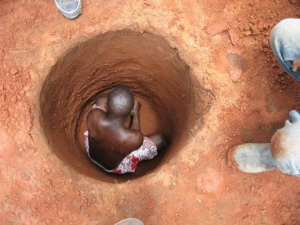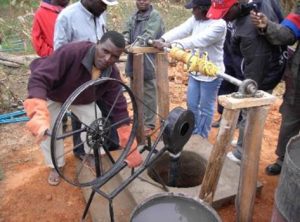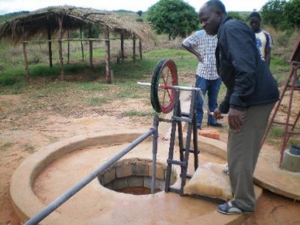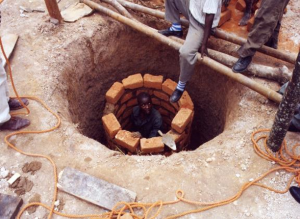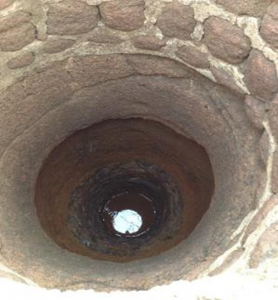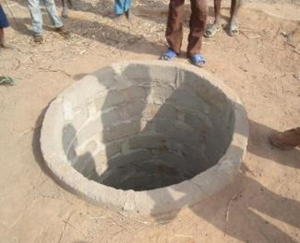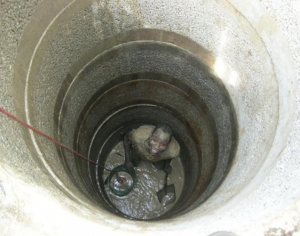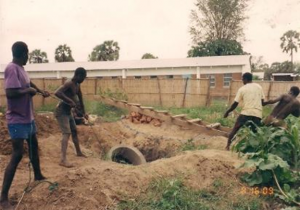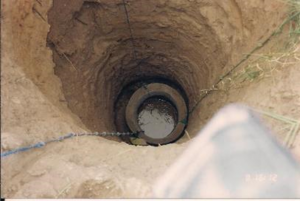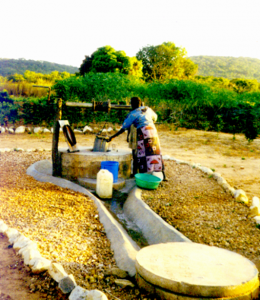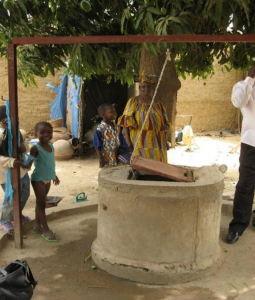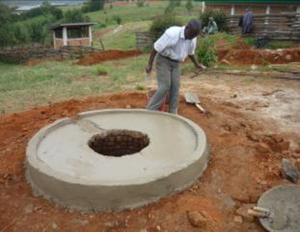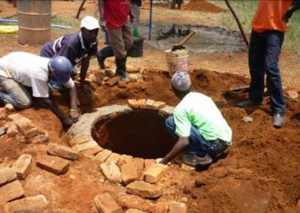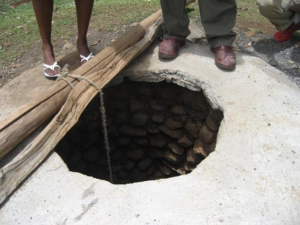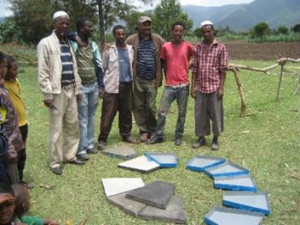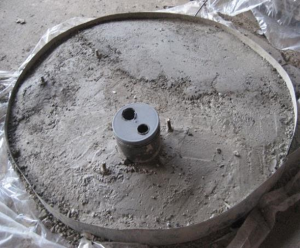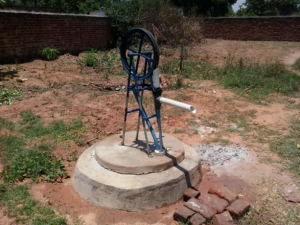1. Hand dug well, unlined
3. Hand dug well, lined with concrete rings
DescriptionA common way for lining is with concrete rings. Wells can be made deeper by digging inside the rings so the rings go down. Advantages compared to bricks:
Disadvantages compared to bricks
Information
|
4. Hand dug well: Well heads and aprons
5. Hand dug well: Well-reducer rings (bricks)
DescriptionAn option to make the well top fit for a well cover is a Well reducer ring. In this cases made of bricks. Advantages compared to a concrete slab– Can be made for any diameter well. Disadvantages compared to concrete slab– For small diameter wells more expensive Information• For wells with any diameter. Preferred inside diameter 70 cm but can be any size |
6. Hand dug well: Well reducer rings (blocks)
DescriptionIf burnt bricks are not available or more expensive than cement blocks, a reducer ring can also be made of tapered cement blocks. Advantages compared to bricks:– An option where bricks are expensive Disadvantages compared to bricks– Requires moulds for blocks Information• Blocks can be made on site or be prefabricated |
7. Hand dug well: Prefabricated well cover
DescriptionIf a Rope pump will be installed and the well has a Well reducer ring, the well cover can be small in diameter (0,8Meter) and can be prefabricated in the pump or other workshop. Advantages compared to on site production well cover
Disadvantages compared to on site production
Information
|

